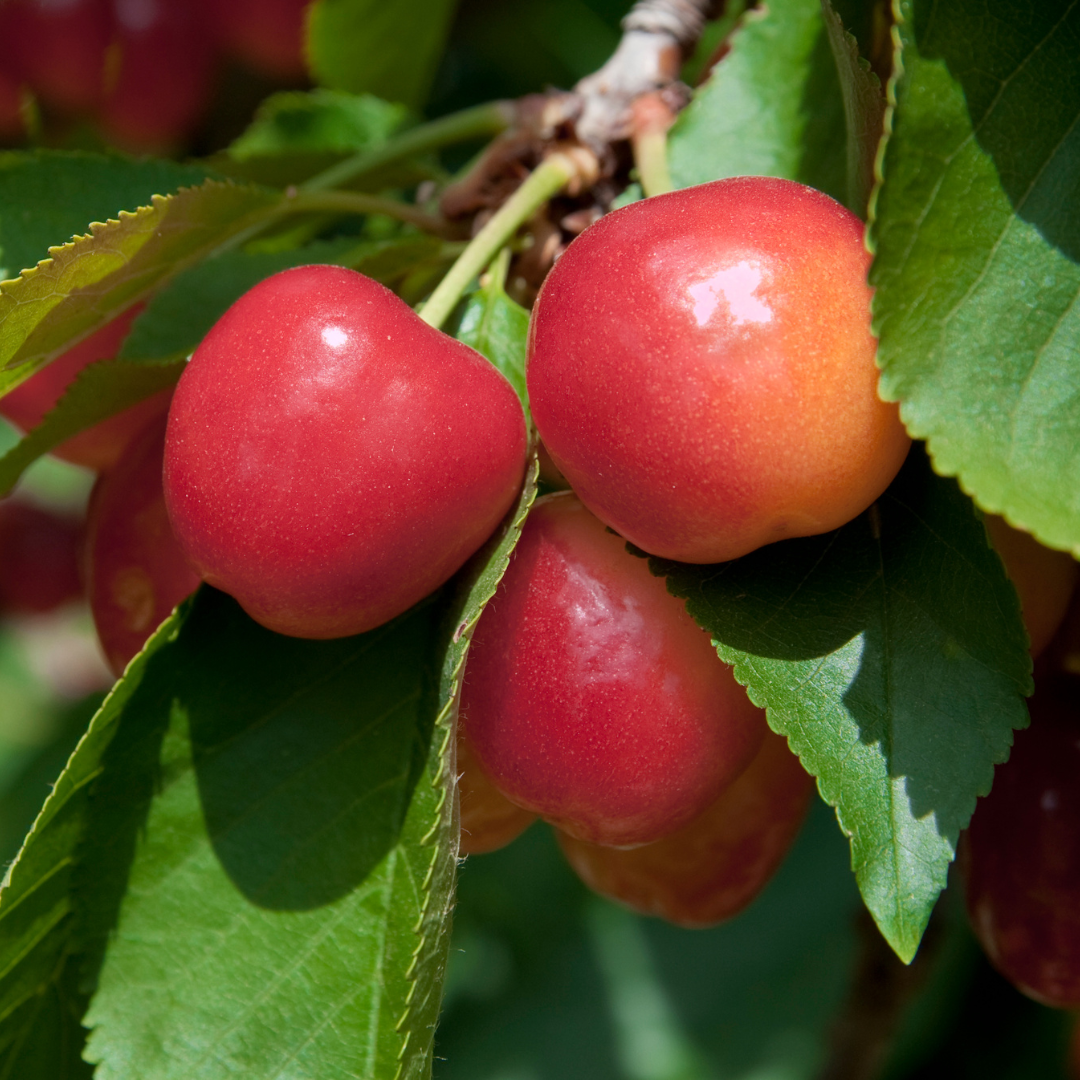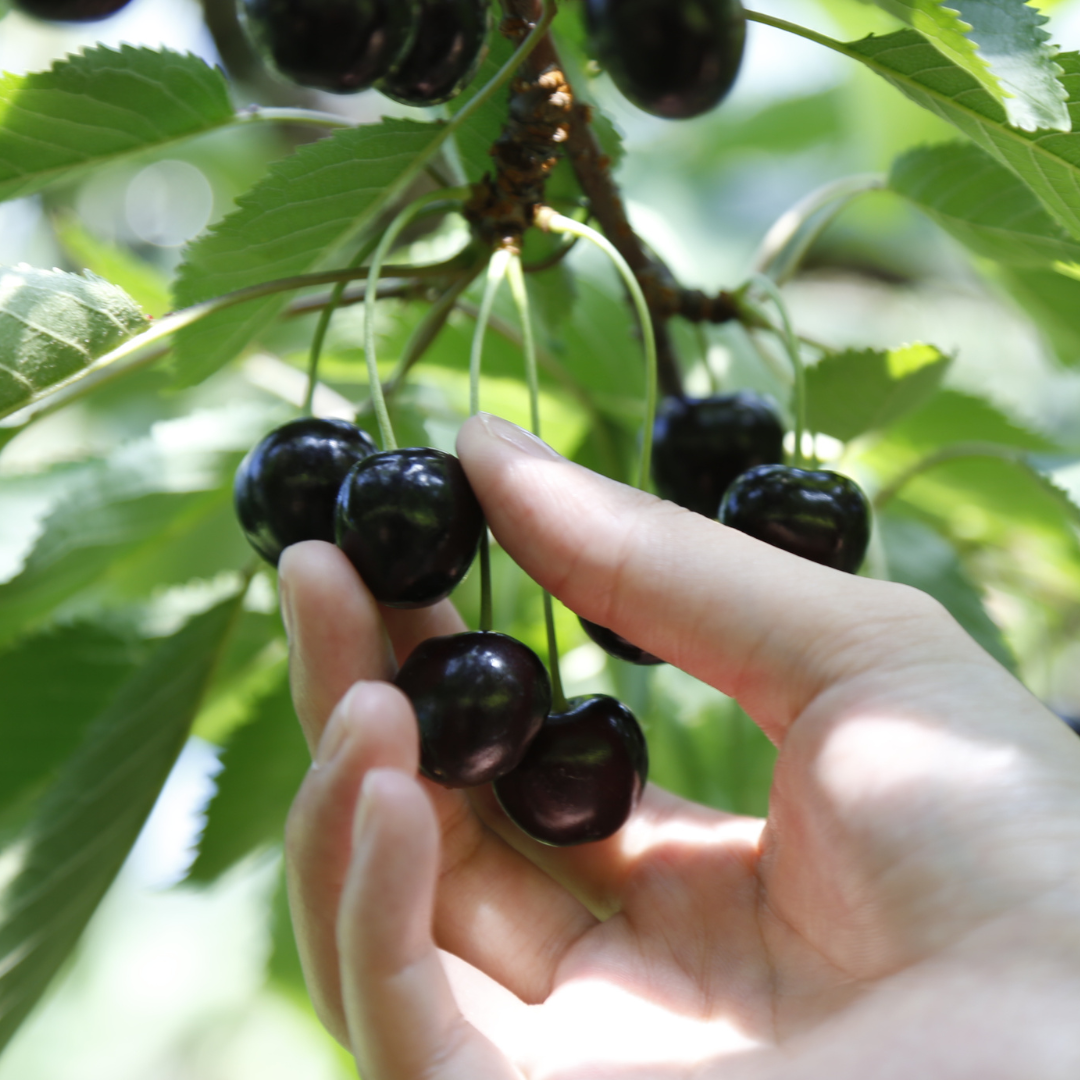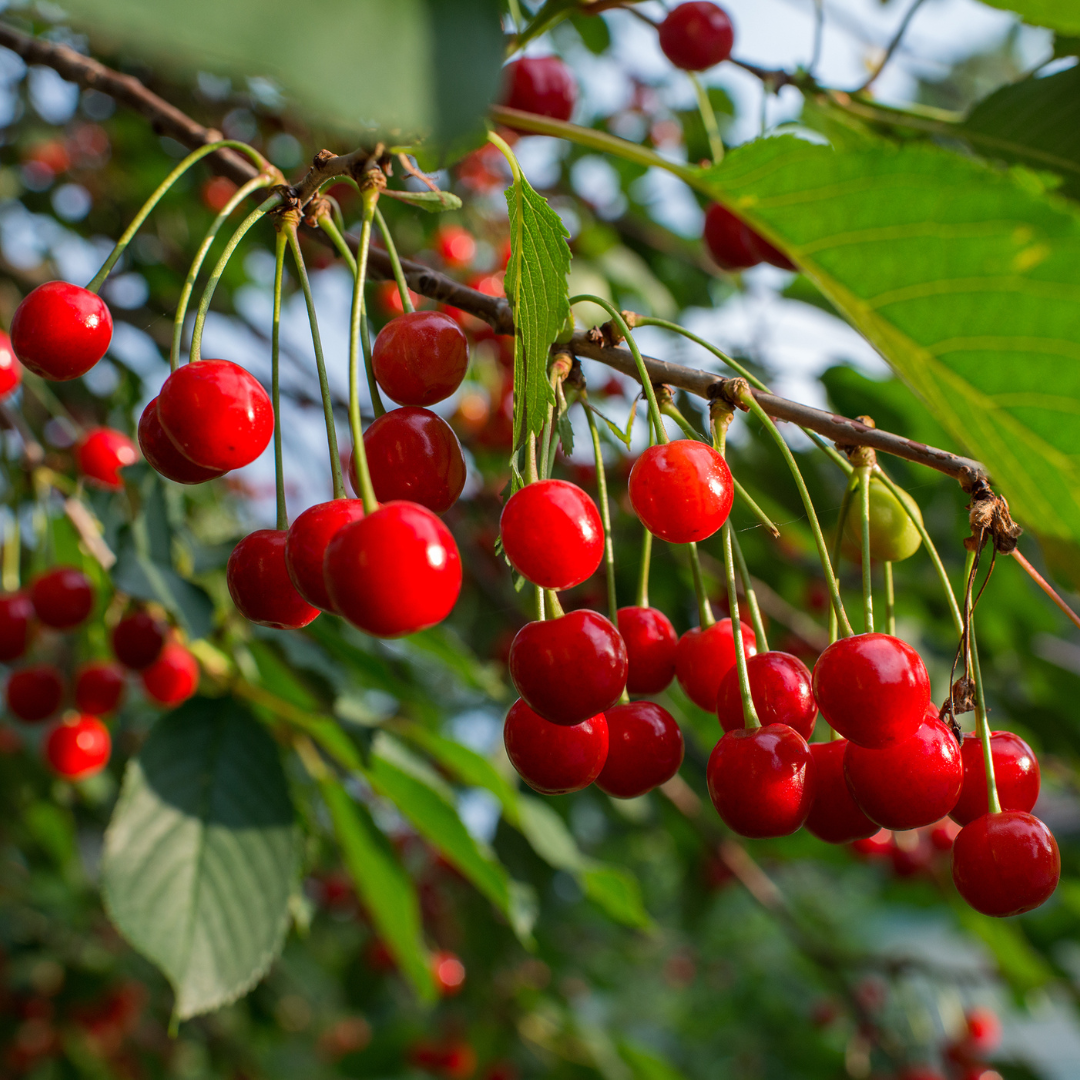Fruiting Cherries 2024
All our fruiting cherries are grown on dwarfing Gisela 5 rootstock (unless otherwise noted) to make them easier for bird netting and access to the fruit. Sour cherries (Prunus cerasus) are said to be self-fertile, but sweet cherries (Prunus avium) need a second sweet variety as a pollinator. Since sour and sweet are different species, they do not pollinate each other.
Sweet Cherries:
Angela: Has large, sweet, black fruit that resists cracking and disease. Blooms early to mid-season. Ripens mid-season. A self-pollinating tree but will perform better with another variety such as Stella or Van.
Bing: The most popular sweet cherry on the American market, Bing cherries produce large, dark smooth skinned fruit in mid-June to early July. The fruit is firm and extremely juicy and very sweet. Great for fresh eating, baking or preserves. One tree can be a heavy producer, with mature specimens producing 50-100lbs of fruit in one year. A WSU Mt. Vernon recommended variety. Blooms early. NOT self-fertile; pair with Rainier, Lapin, Stella, Sam, or Van for pollination.

Lapin: An outstanding sweet dark cherry for Northwest gardens. Fruit is very large and crack resistant, sweet, juicy, perfect for fresh eating or baking. Blooms early, ripens mid-season. Said to be self-fertile but fruit set can be improved with another variety such as Rainier or Bing. A WSU Mt. Vernon recommended variety.
Rainier: Large, delicious fruits are yellow with pink blush. Blooms early. Needs a pollinizer such as Bing, Lapins, or Royal Anne or Vandalay.

Royal Rainier: Large yellow cherry with slightly more red blush than Rainier. Excellent flavor, taste test winner. Ripens early, about 3-5 days ahead of Rainier. Pollinated by Bing and Lapins. Maxma 14 rootstock
Sam: Fruit are so dark red in color they are almost black. The flavor is considered “sweet/tart”. An excellent choice for the Pacific Northwest because of its resistance to cracking/canker, cold hardiness, and heavy yields. Pollinate with Bing.
Stella: Developed in British Columbia, Stella was the first self-fertile cherry to be named. Large, heart-shaped red fruits are sweet and juicy. Considered a universal pollinizer for all sweet cherries except Bing. Blossoms mid-season and ripens early. A reliable and heavy producer. Winner of the RHS Award of Garden Merit.
Vandalay: Well-suited to Northwest gardens. Cherries are deep wine-black, firm and have excellent flavor for fresh eating. A disease resistant/crack resistant, productive WSU Mt. Vernon recommended variety. Early blooming & self-fertile, but fruit set may be improved by planting with Bing, Lapin, Rainier.

Sweet Cherry 4-way Dwarf Combo: (4 of these 5 varieties) Bing, Rainier, Lapin, Glacier, Van, Royal Ann
Tart/Pie Cherries:
Montmorency: this variety has been cultivated in this country since the early 20th century. It is the most popular sour cherry in America. It produces a large, light red fruit for baking, drying and juicing. Self-fertile.

Cherry Rootstock:
Gisela 5: Dwarf 50-65% seedling size; early fruiting and productive; good frost and virus resistance, well-anchored, adaptable to a variety of soil types. Requires supplemental irrigation.
Maxma 14®: Dwarfing to about 2/3 of standard. Less dwarfing expected in fertile loamy soils. Induces early heavy bearing; crop management may be needed for productive varieties in early years. Good tolerance to wet soils, also performs well in calcareous soils. Resistant to bacterial canker and nematodes. Well anchored, very little suckering. Trees may be held to any desired height by summer pruning.
